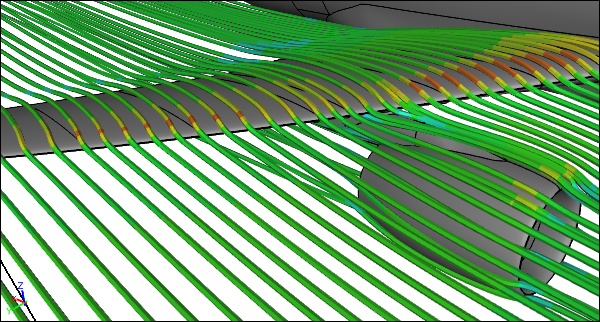
September 2013: CFD Applied to an Airliner, Wind Erosion, and a Pitot Tube
Computational Fluid Dynamics (CFD) is widely applicable across many industries and applications. For example, check out this month's series of blog posts that cover the aerodynamics of an airliner, the wind erosion of the Great Sphinx at Giza, and the multiphase simulation of a combined pitot tube and manometer - each is highlighted by a Caedium Professional CFD simulation.
 Caedium CFD Simulation of an AirlinerStreamlines colored by velocity magnitude
Caedium CFD Simulation of an AirlinerStreamlines colored by velocity magnitude
Automated CFD Angle of Attack Sweep for an Airliner
Often in a CFD study you will find yourself repeating a series of operations that are prime candidates for automation. For instance, performing an angle of attack (alpha) sweep for an airplane configuration is a great example where automation can be a significant time saver as I will demonstrate. Read more >>
The Great Sphinx CFD Wind Erosion Study
There are many erosion processes that relate directly to either water or air flow. And if it flows, then CFD can help. So it should come as no surprise that CFD was used to better understand and predict the wind erosion on the Great Sphinx in Egypt. Read more >>
CFD Simulation of a Pitot Tube and Manometer
Pitot tubes are critical devices used to determine the airspeed of an aircraft. In aerodynamics it is important to know the speed of an aircraft relative to the surrounding air to alert pilots to stall conditions. Pitot tubes are also used in wind tunnels to determine airspeed, sometimes using a manometer to measure the pressure difference between static pressure and total pressure to determine the dynamic pressure. I thought it would be interesting to see if we could simulate a pitot tube connected to a manometer (two-phase flow, air + water) using CFD and to share my findings with you. Read more >>
